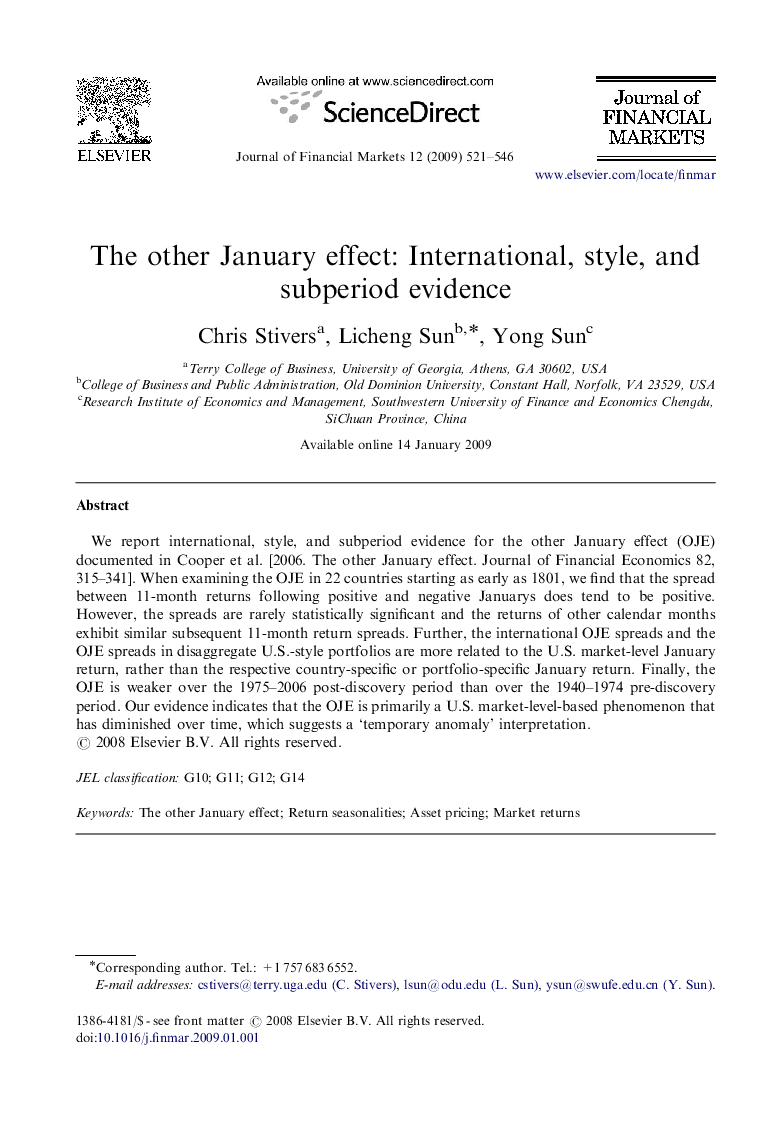| Article ID | Journal | Published Year | Pages | File Type |
|---|---|---|---|---|
| 960926 | Journal of Financial Markets | 2009 | 26 Pages |
Abstract
We report international, style, and subperiod evidence for the other January effect (OJE) documented in Cooper et al. [2006. The other January effect. Journal of Financial Economics 82, 315-341]. When examining the OJE in 22 countries starting as early as 1801, we find that the spread between 11-month returns following positive and negative Januarys does tend to be positive. However, the spreads are rarely statistically significant and the returns of other calendar months exhibit similar subsequent 11-month return spreads. Further, the international OJE spreads and the OJE spreads in disaggregate U.S.-style portfolios are more related to the U.S. market-level January return, rather than the respective country-specific or portfolio-specific January return. Finally, the OJE is weaker over the 1975-2006 post-discovery period than over the 1940-1974 pre-discovery period. Our evidence indicates that the OJE is primarily a U.S. market-level-based phenomenon that has diminished over time, which suggests a 'temporary anomaly' interpretation.
Related Topics
Social Sciences and Humanities
Economics, Econometrics and Finance
Economics and Econometrics
Authors
Chris Stivers, Licheng Sun, Yong Sun,
